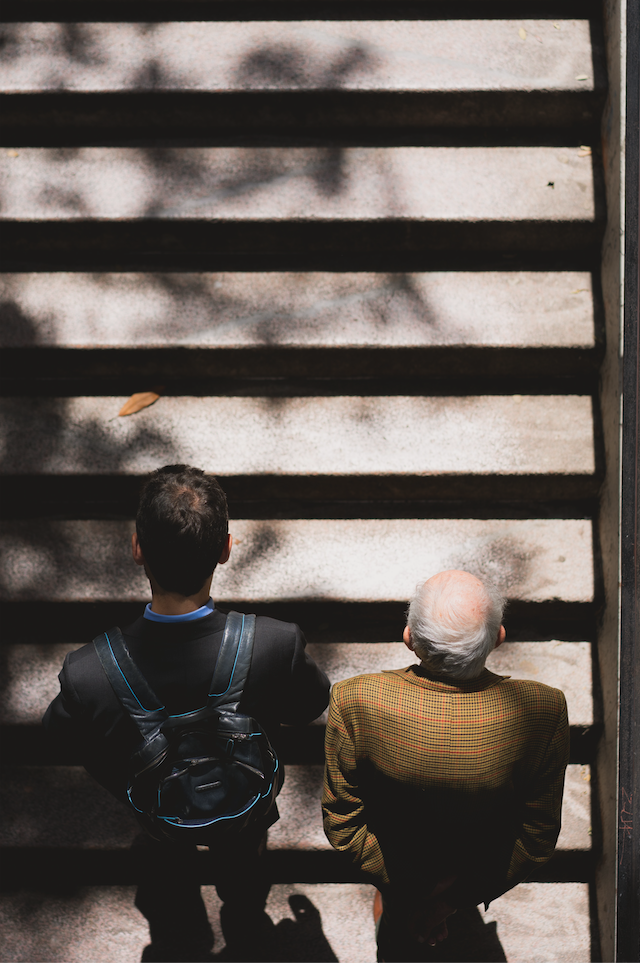
What Can Betty Robinson Teach Students about Grit?
By Tim Elmore
You may have never heard the Betty Robinson story, but it’s worth knowing. It informs our work with students today. Betty was a kid who grew up a hundred years ago in Riverdale, Illinois. In high school, she had to catch a train to her campus, quite literally. One day, she found herself running on the platform as the train took off, and a teacher looked out the window to see her. He smirked, thinking to himself: that poor girl will never catch this train. The next thing he knew, Betty sat down next to him. She had outrun the train.
This teacher was also the school track coach. He quickly changed Betty’s life forever.
Mr. Price invited Betty to join the boy’s track team, and she soon became the fastest athlete on that team. In fact, in her first competition, she broke a world record. Later, when Coach Price took Betty to a larger track meet, she went up against Helen Filkey—the world record holder in that event—and finished second. Not bad, but she didn’t like second place. She liked to win. So, she kept pushing herself. Betty beat Helen the next time they met. In 1928, this high school junior qualified for the Amsterdam Olympics, the first games to allow women to compete. She showed the world what she could do, winning a gold medal. The first ever by a woman.
Then, tragedy struck.
In 1931, Betty was in a small plane crash. She appeared to be dead, so medics took her to the undertaker instead of the hospital. While there, she flinched. She was alive. After arriving at the hospital, the prognosis was bad. She likely wouldn’t live, but if she did, she’d never walk again. They were wrong. It took her two years, but Betty walked again. Upon her release, one of her legs was a half inch shorter than the other, which made running almost impossible. She couldn’t even kneel at the starting blocks. But Betty was no ordinary person. She would not give up on her dream to compete and win.
Over time, she had an epiphany. The one event she could compete in was the relay race, where she would not have to bend over; she must simply grab a baton and run like the wind. It was a miracle, but Betty Robinson competed again in the Berlin Olympics in 1936, with Adolf Hitler looking on.
Betty and the U.S. team won the gold medal.
A Picture of Grit and Growth
So, what does Betty Robinson teach us? At least five big ideas for how grit is developed.
1.Grit grows when necessity demands it.
As a teen, Betty Robinson had to ride a train to school. When she ran late, it required her to push herself to catch it. She found herself literally catching that train as a necessity. This regular necessity gave her the rehearsal she needed to embody grit as a natural trait in her life.
What activities do you insert into each day that foster students in growing grit?
2. Grit grows in the presence of fierce competition.
When Coach Price saw her run, he asked her to compete against the boys’ track team, and then Helen Filkey, and later international champions. This regular competition with them provided the grind to deepen her grit and the resilience she needed for later.
Can you create healthy competition that helps students deepen grit in your context?
3. Grit grows when there’s a huge aspiration.
We seldom develop grit or resilience unless we have a captivating goal in front of us; a reason to push ourselves beyond our comfort zone. The 1928 Olympic games gave Betty an aspiration to reach for, which furnished inspiration to reach new heights of performance.
Are there any huge targets that capture students’ imagination in your environment?
4. Grit grows when adversity is introduced.
Adversity and harsh conditions are an incubator for grit. In such conditions, we crumble or we improve. What’s the phrase? What doesn’t kill you makes you stronger. Betty’s plane crash was another stepping-stone to recovery and deeper resilience.
What appropriate adversity or hardship is present in your context for students to face?
5. Grit grows when we must adapt to a new opportunity.
Betty’s story comes to a climax when it appears her running days are over. She finds a way to re-enter the Olympic games by identifying a new event in which she can participate. Her adaptability enabled her to expand her ability. The 1936 relay team is a prime example.
How are students required to regularly adapt to reach their goal?
Betty’s edge was not just her speed but her strategy. It was not just her athleticism, but her adaptability. It wasn’t just about talent but tenacity. What did Betty Robinson encounter along the way? Going unnoticed for fifteen years; being laughed at by naysayers who felt she didn’t belong; competing against experienced athletes; a tragedy that should’ve ended her life, then enduring wheelchairs and rehab for two years. These were only interruptions along the way.
Betty teaches us interruptions can be introductions to a new way to reach your goal.
Growing Leaders now has a new event for faculty, coaches and school administrators called: Growing Grit in Students. If your school sees the need to develop resilience in students, contact us to schedule this training event on your campus.






